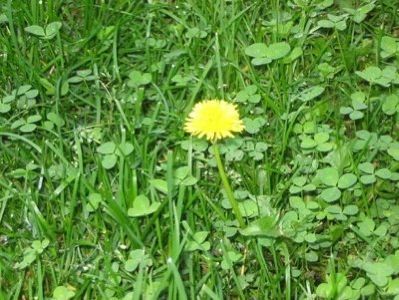Past Columns by The Lawn Coach. Lawn Tips, Lawn Advice and Lawn Care help for all your lawn care needs. by The Lawn Coach. Lawn Tips, Lawn Advice and Lawn Care help for all your lawn care needs.

First Things First
Q: Hello, I live in a coastal Southern Oregon town. My yard has been ignored for 5 years andis presentlymore weeds than grass. I would like to address the problem via NOT digging the existing lawn out. Is there a schedule of lawn applications I couldbegin now (Fall) and continue thru the year?
Thank you.
Shell
A: Hi Shell,
First things first. Your issue is that there are too many weeds, and not enough grass. There’s no fertilizer or chemical in the world that will make grass grow where there is no grass seed. This is one of those things that is EXTREMELY important to understand. It’s almost like asking me what you should feed your 15 year old daughter to make her understand your point of view every time you discuss something. You and I both know, it ain’t gonna happen without more significant effort. The cool thing about the effort I am going advise you on for your lawn? It’ll actually work.
The first step in improving any lawn is identifying what the problems are, then laying out the right steps to fixing them. In your case, there’s too many weeds, and not enough grass. So, we need to either eliminate the weeds, fill in the grass, or both.
Let’s assume it’s both. Step one; get rid of the weeds. There are many different methods available here. The easiest is to simply break out the chemical controls. Now I just KNOW I’m going to get e-mails from the “green” folks politely explaining the negatives to this method, so let me just say this. It works if done correctly. There’s lots of products available, but you need to read the label and follow the instructions to the letter.
Non-chemical control? You could rip them out, OR you could smother them. Depending on the size of the lawn, you could lay down plastic tarps for about 2 weeks. Once the plastic is peeled up, there won’t be much living vegetation left, which will give you a good opportunity to seed and fill the lawn in.
Step two; seed! You can use a core aerator, verticutter, rototiller, or any other implement that has fast moving metal parts that rough up the soil. This is the lawn care equivalent to plowing the field. If your lawn is small enough, you can even use manual tools, though I’d advise getting some good work gloves unless you want to become a lesson on how to grow really cool hand blisters. After the soil is roughed up, spread some good grass seed and mix it into the top half inch of soil with a rake. You can now either cover it up with some hay mulch, or not. In my experience, the hay helps, but it’s not absolutely necessary. It all depends on how nitpicky you want to be.
Final step: water! This is a very simple rule that I shall unashamedly repeat until the proverbial cows come home (where did they go in the first place anyway?). SEED DOES NOT GROW WHEN DRY! If you water every day, it’ll grow. If you water every other day, it’ll take twice as long to grow. If you water every third day, well I hope you get the idea.
So, what do you do about that schedule of applications you had actually asked me about before I went on this rant about nuking weeds and seeding? Simple! Tune in next week for part 2.
Monday, September 15, 2008


